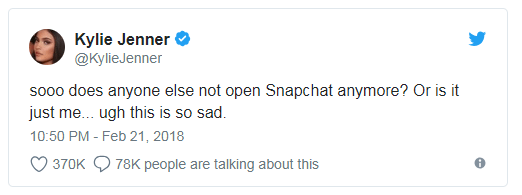Instagram Stories vs Snapchat
In the battle of the social media platforms, Instagram (owned by social media giant Facebook Inc) released a new update that changed the way users interact with the platform. It increased the actual time spent on platform across demographics.

According to Instagram, those under the age of 25 spend more than 32 minutes per day on Instagram, whilst those aged 25 and older spend 24 minutes a day. Considering how quickly users are able to scroll through their feeds and stories, that is a considerable amount of time to accumulate.
In 2016, Instagram introduced the Instagram Stories feature– with many notably comparable features to competitor platform Snapchat.
For those that may be slightly behind, Instagram stories is a feature within the platform that allows users to upload temporary photos and videos (lasting 24 hours) with image filters, effects, GIFs, music, text, hyperlinks, location check-ins, polls and more.
The buzz surrounding Instagram Stories picked up speed when Snapchat released a new interface in February 2018, which caused an overwhelmingly negative response (there was actually a petition with 1.2 million signatures to reverse the redesign). This included negative comments from high profile celebrity influencers, such as Kylie Jenner who tweeted the following:

Following this tweet, Snapchat’s stock immediately took a hit – though it is not definitive that this was related to Jenner’s tweet, it would be a remarkable coincidence if her 25.5M Twitter following did not have some impact.
The Social Report claimed back in May that Facebook’s new Instagram Stories product had acquired 250 million daily active users within the first year of the launch, surpassing Snapchat’s 191 million active users. To date, Instagram Stories now counts around 400 million daily users.
The growth in Instagram Stories – What does this mean for Marketers?
Instagram Stories has created a way of communicating with customers without ruining their user experience, whilst still remaining an effective tool for Marketing. It has allowed businesses to loosen their metaphorical tie, and shake the corporate image by posting authentic, personable content directly to their audience in the least disruptive way possible.
Additionally, stories are full screen on mobile, meaning there is more space for your content and less distractions for the user.
Instagram is a network built on visual content, which may initially make it seem difficult to stand out against the competition, but really it’s a massive opportunity to get creative and visually highlight your products or brand.
No matter the industry, thinking in a ‘design-forward’ way can lead to a story that resonates with users – brands can no longer blame poor visuals for under-performing campaigns.
Though there is plenty of room for playful, informal content within Instagram Stories Ads, there is a need for balance between corporate and personable. Stories often need some ‘sauce’ – but slapping GIFs and stickers all over the ad, does not make your brand seem ‘fun and millennial’ – it makes your ad irritating and unprofessional, and the user is likely to skip it.
The most important tip is to tell a good, clear story which is well designed, conscious and considered (including the use of GIFs and stickers). Below are the top 5 tips to making your Instagram Stories Ad a success:
Tips
- Instagram stories is a fast-moving game, meaning it’s important you make the first half a second of your ad visually appealing. Use speed as your creative tool and demonstrate your message and brand quickly.
- Rather than using one scene, tell your story from one moment to the next to keep your audience engaged – include several quick chapters.
- The fast-paced nature of Instagram Stories means you need to reinforce your brand at the first opportunity – literally as soon as it appears on screen, and again at the end. Or to make your brand stand out further, keep your brand visible for the duration of the ad either overlaying dominantly, or a in a minimalist fashion – examples shown below.
- Users are mostly watching stories on their mobile, without their sound on. Execute your ad in a way that works without sound by using visual aids. However, you should include music or voice overs for those that do watch with sound.
- Use a Call to Action – keep it clear and concise, ‘Swipe up for X product.’


Specifications & placement
Instagram Stories adverts appear between users’ stories for up to 15 seconds, or if the user dismisses the ad before the end.
Source ratio: 16:9 to 4:5 and 9:16.
Video length: 1-15 seconds (but as ever with social marketing video content, the shorter and punchier the better).
Text & captions aren’t supported in Stories ads, so convey your message as either short text overlays or through sound (remember, more users will watch without sound than with).
You can find a full list of the technical requirements here.
Summary
1/3 of the most viewed Instagram stories are from businesses and 50% of businesses worldwide create 1 story in a typical month. Online adults and millennials aged 18-34 (61% of Instagram’s user base) are likely to follow a brand on social networking platforms, so whether you want to organically post some behind the scenes footage, share a live video, or drive sales and revenue through ad placement, you can do it all with Instagram Stories.
We can help you tell your story
Here at Coast Digital, we’re always helping our clients stay up to date with the latest social media marketing opportunities – and we’d love to help you do the same.
If you’d like to know more about Instagram Stories and how they can help get your brand get in front of your target audience and ahead of the competition, contact us today.
